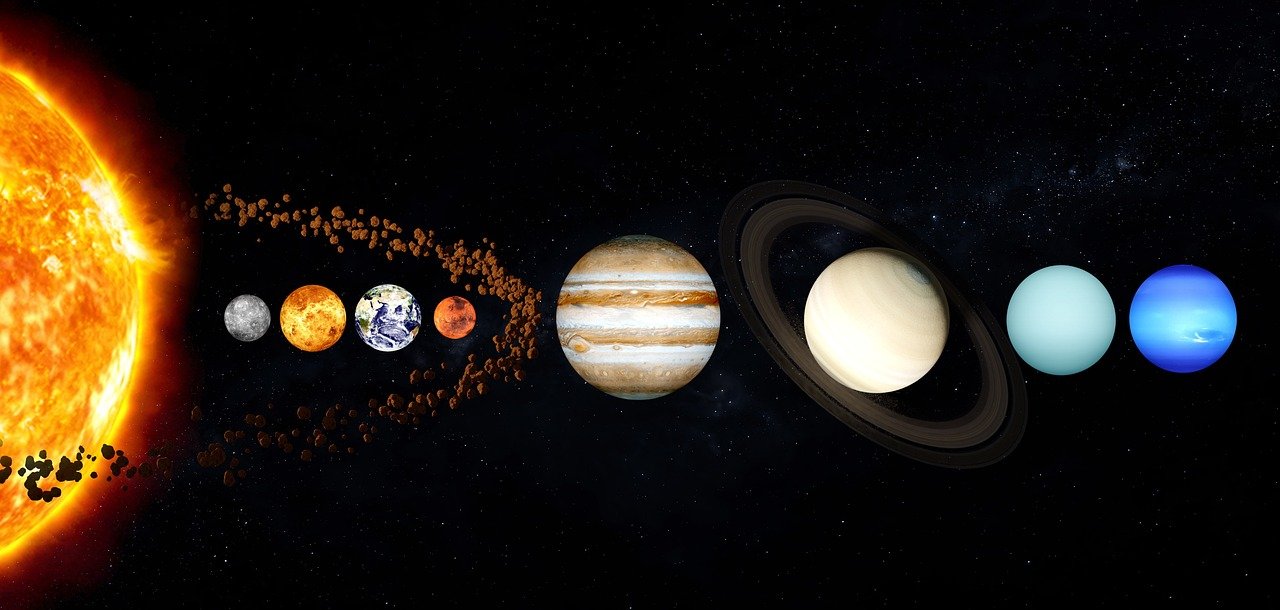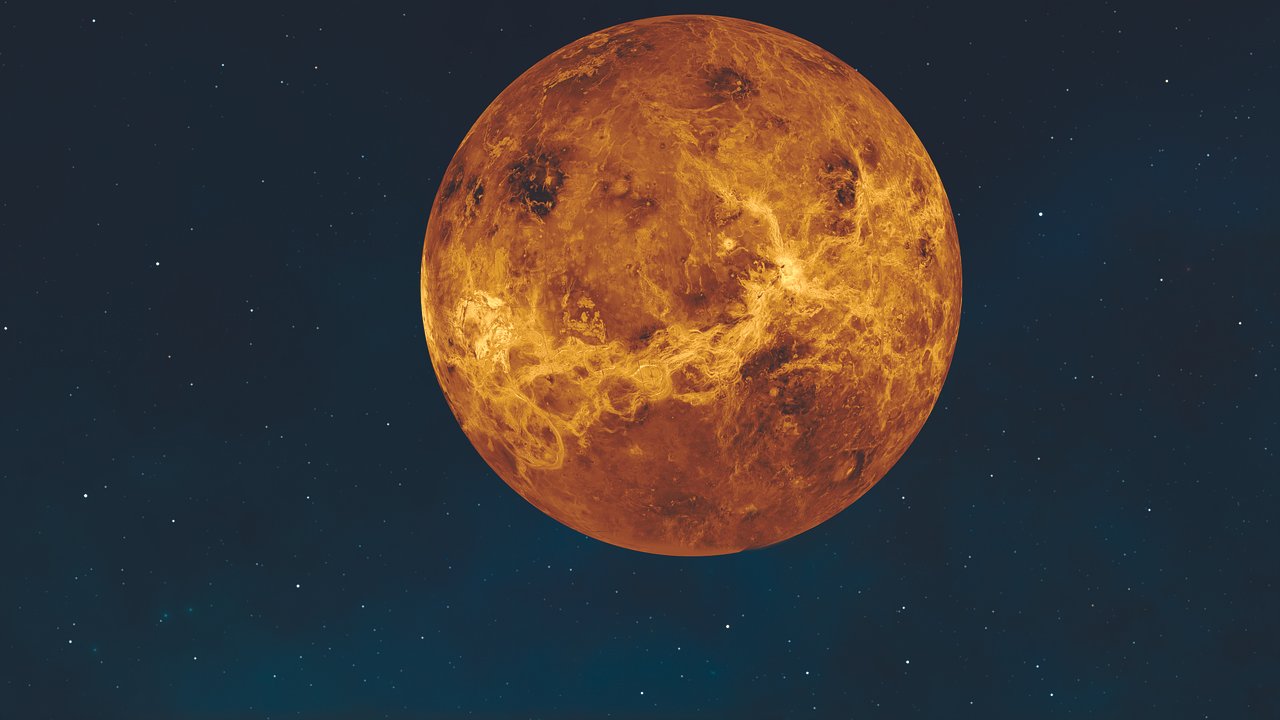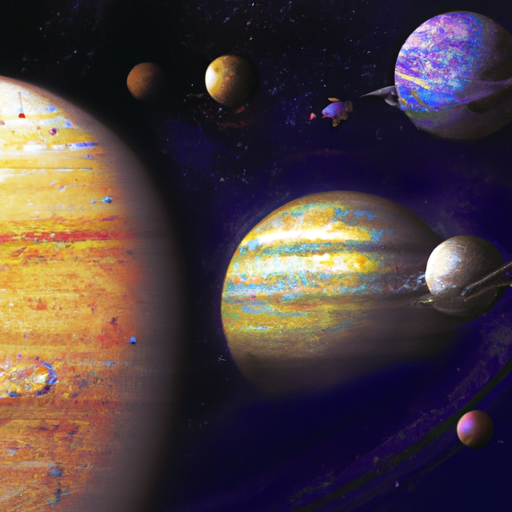Have you ever gazed up at the night sky and wondered about the mysteries of the universe? In the vast expanse above us, one celestial body has captured the imagination of humans for centuries: Venus, the Evening Star. But what lies beyond this brilliant planet? In this article, we will embark on a thrilling journey, mapping the celestial path of Venus and exploring the wonders that await us in the depths of space. Get ready to be awed by the cosmic beauty that lies beyond the confines of our world.

Exploring the Importance of Venus in Astronomy
Venus as the Evening Star
Venus, often referred to as the Evening Star, has captivated the attention of astronomers for centuries. As one of the brightest objects in the night sky, Venus has played a significant role in celestial navigation and the understanding of our solar system. Its striking beauty and prominent presence make it an ideal subject of study for astronomers worldwide.
Historical Significance of Venus
Throughout history, Venus has held great importance in various cultures and civilizations. Ancient civilizations such as the Mesopotamians recognized Venus as a celestial being and associated it with their deities. Furthermore, the study of Venus was vital in the development of our understanding of the heliocentric model of the solar system and the motion of celestial bodies.
Role of Venus in Mythology
Venus, also known as the goddess of love and beauty in Roman mythology, has been a significant symbol in various mythological stories. From the Greek goddess Aphrodite to the Roman counterpart Venus, this celestial body has been associated with love, desire, and feminine beauty. The interplay between mythology and astronomy adds an intriguing layer to our fascination with Venus.
Exploration of Venus by Spacecraft
Over the years, numerous spacecraft have ventured towards Venus in an attempt to unravel its mysteries. These missions have provided valuable insights into the planet’s atmosphere, surface conditions, and composition. The exploration of Venus has not only deepened our knowledge of the planet itself but has also provided a basis for comparison with other celestial bodies within our solar system.
Orbit and Position of Venus
Venus’ Orbit around the Sun
Venus, like Earth, orbits the Sun. However, its orbit is closer to the Sun, making it an inner planet. The average distance of Venus from the Sun is approximately 67 million miles, and its orbital period is around 225 Earth days. Studying the orbit of Venus helps us understand the dynamics of planetary motion and the gravitational forces that shape our solar system.
Inferior Conjunctions and Superior Conjunctions
During its orbit, Venus undergoes both inferior and superior conjunctions with the Sun. An inferior conjunction occurs when Venus lies between Earth and the Sun, while a superior conjunction occurs when Venus is on the opposite side of the Sun from Earth. These conjunctions are essential for astronomers to accurately measure Venus’ position in the sky and study its movements.
Venus’ Position relative to Earth
Venus, being an inner planet, exhibits a range of positions relative to Earth. At times, it becomes the Morning Star, appearing before sunrise, while at other times, it becomes the Evening Star, visible after sunset. The varying positions of Venus in relation to Earth offer unique opportunities for observation and study, further enhancing our understanding of planetary movements.
The Closest Approach of Venus to Earth
At times, Venus comes closest to Earth during its orbit, resulting in what is known as a close approach or a great conjunction. This phenomenon occurs when the alignment of Earth, Venus, and the Sun allows for the shortest distance between the two planets. These close approaches provide astronomers with the opportunity to study Venus in greater detail and capture images of its surface and atmosphere.
Understanding Venus’ Phases
Phases of Venus
Similar to the Moon, Venus goes through phases as seen from Earth. These phases range from crescent to full, depending on the relative positions of Venus, Earth, and the Sun. The study of these phases helps astronomers understand the geometry of the solar system and validate the heliocentric model proposed by Nicolaus Copernicus.
Explanation of Phases using Heliocentric and Geocentric Models
The phases of Venus can be explained using both the heliocentric and geocentric models of the solar system. In the heliocentric model, Venus’ phases result from the varying angles between Venus, Earth, and the Sun. In the geocentric model, the phases of Venus are attributed to the combination of Venus’ orbit around the Sun and its alignment with Earth during different points of its journey.
Observing Venus in the Night Sky
Visibility and Brightness of Venus
Venus is one of the most visible objects in the night sky, often outshining all other celestial bodies. Its brightness is due to its proximity to Earth and its highly reflective atmosphere. Moreover, Venus’ atmosphere acts as a natural mirror, reflecting sunlight and enhancing its visibility even during daylight hours.
Determining Venus’ Visibility
To determine when Venus will be visible in the night sky, astronomers rely on various calculations and observations. Factors such as the position of Venus in its orbit, its conjunctions with the Sun, and its elongation from the Sun all play a role in determining its visibility. These calculations enable astronomers and skywatchers to anticipate when Venus will be at its most prominent in the night sky.
Ideal Conditions for Observing Venus
When observing Venus, certain conditions contribute to a more optimal viewing experience. Clear skies and minimal light pollution greatly enhance visibility. Additionally, choosing a location with an unobstructed view of the horizon increases the chances of observing Venus during its rise or set. Utilizing binoculars or telescopes can further enhance the viewing experience, allowing for a closer examination of the planet’s features.
Best Time to Observe Venus
Although Venus can be observed at various times throughout the year, there are optimal moments when it shines brightest and is easiest to spot. Typically, these ideal times are during Venus’ greatest elongation, which occurs when it is farthest from the Sun as seen from Earth. During these elongation periods, Venus appears higher in the sky and remains visible for a more extended period, providing ample opportunity for observation.

Mapping Venus with Telescopes
Mapping Venusian Surface
The study of Venus’ surface has been a challenging task due to its thick atmosphere, extreme temperatures, and high atmospheric pressure. However, advancements in telescopic technology have allowed astronomers to map certain features of Venus with greater accuracy. By observing Venus in different wavelengths of light and utilizing radar imaging techniques, researchers have been able to create detailed maps of the planet’s surface, revealing its mountains, valleys, and impact craters.
Obstacles in Mapping Venus
Mapping Venus poses unique challenges due to its dense atmosphere and the presence of thick clouds composed primarily of sulfuric acid. These clouds obstruct visible light, making it difficult to observe the planet’s surface directly. However, scientists have overcome this obstacle by using radar imaging techniques, which can penetrate the cloud cover and provide valuable information about Venus’ surface topography.
Ground-Based Telescopes for Venus Observation
Ground-based telescopes play a crucial role in observing and mapping Venus. Equipped with advanced optical and spectroscopic instruments, these telescopes allow astronomers to study Venus’ atmosphere, determine its chemical composition, and analyze its surface features. Ongoing observations using ground-based telescopes contribute to our understanding of Venus’ geological history and atmospheric dynamics.
Space-Based Telescopes Mapping Venus
In addition to ground-based telescopes, space-based observatories have played a significant role in mapping Venus. Probes such as the Magellan mission have provided high-resolution radar maps of Venus’ surface, allowing scientists to study its geological formations and gain insights into the planet’s past. Furthermore, space-based telescopes like the Hubble Space Telescope have contributed valuable data regarding Venus’ atmosphere and cloud dynamics.
Venus’ Atmospheric Composition
The Greenhouse Effect on Venus
Venus has an atmosphere predominantly composed of carbon dioxide, with traces of nitrogen and other gases. This atmospheric composition leads to an extreme greenhouse effect, trapping heat and resulting in scorching surface temperatures. Studying the greenhouse effect on Venus provides valuable insights into climate processes and helps understand the conditions necessary for habitability on other planets.
Composition of Venus’ Atmosphere
Venus’ atmosphere primarily consists of carbon dioxide, which makes up about 96% of its composition. The remaining gases include nitrogen, sulfur dioxide, and trace amounts of various other gases. The study of Venus’ atmospheric composition allows scientists to compare it with Earth’s atmosphere, providing a basis for understanding the evolution of planetary atmospheres and the potential for life beyond our planet.
Exploring Venus’ Atmosphere using Spectroscopy
Spectroscopy, the study of the interaction between matter and electromagnetic radiation, has been instrumental in understanding Venus’ atmosphere. By analyzing the light reflected or emitted by Venus and studying its spectra, scientists can determine the chemical composition of the planet’s atmosphere. This analytical technique has provided valuable data on the presence of certain gases and the dynamics of Venus’ atmospheric processes.
Conditions on Venus: Temperature, Pressure, and Winds
Venus is known for its extreme surface conditions, with temperatures reaching an average of 900 degrees Fahrenheit (475 degrees Celsius) and atmospheric pressure around 92 times that of Earth. In addition, Venus experiences high-speed winds in its upper atmosphere, known as the “super-rotation” phenomenon. These unique conditions offer insights into the behavior of planetary atmospheres and the factors influencing climate patterns.

The Mystery of Venus’ Rotation
The Slow Retrograde Rotation of Venus
One of the most intriguing aspects of Venus is its retrograde rotation, which means it rotates in the opposite direction compared to most other planets in our solar system. While Earth rotates counterclockwise, Venus rotates clockwise. This unusual rotation pattern has puzzled scientists for decades and continues to be a subject of research and speculation.
Possible Causes for Venus’ Rotation
Several hypotheses have been proposed to explain the retrograde rotation of Venus. One possible cause is a massive collision with another celestial body during its early formation, which could have disrupted its rotational motion. Alternatively, tidal interactions with the Sun or gravitational interactions with other planets could have also influenced Venus’ rotation over time. Further investigation and analysis are necessary to definitively determine the true cause of this peculiar motion.
Venus’ Rotational Period
Venus’ rotational period is equally bewildering. It takes approximately 243 Earth days for Venus to complete a full rotation, significantly longer than its orbital period around the Sun. This phenomenon, known as “super-rotation,” has an intriguing effect on Venus’ atmosphere, generating strong winds and atmospheric dynamics that contribute to its extreme weather conditions.
Effects of Venus’ Rotation on its Surface
The slow rotation of Venus has significant consequences for its surface features. Due to its lengthy rotational period, Venus experiences minimal temperature differences between day and night. This results in a relatively homogeneous and inhospitable surface, lacking the dynamic geological forces observed on Earth. The impact of Venus’ rotation on its surface illustrates the complex interplay between celestial motion and geophysical processes.
Venus’ Relationship with Earth
Comparing Venus and Earth
Venus and Earth, often referred to as sister planets, share various similarities and differences. Both planets have rocky compositions and similar sizes, embodying the terrestrial nature of our solar system. However, stark contrasts in their atmospheres, surface conditions, and overall habitability distinguish the two planets and provide insights into the factors necessary for sustaining life.
Venus and Earth as Sister Planets
Venus and Earth, neighboring planets within the inner solar system, have been referred to as sister planets due to their shared characteristics. Both planets possess an atmosphere, experience volcanic activity, and exhibit tectonic features. Their similar composition and proximity to each other make them ideal comparative subjects for studying planetary geology and atmospheric processes.
Venus’ Influence on Earth and Vice Versa
Despite their differences, Venus and Earth have a complex relationship that extends beyond their physical characteristics. The study of Venus’ atmospheric dynamics can provide valuable insights into climate processes and contribute to our understanding of Earth’s climate system. Furthermore, comparative studies between the two planets deepen our knowledge of planetary evolution and the potential for habitable environments.
Investigating Venus-Earth Similarities and Differences
By investigating the similarities and differences between Venus and Earth, scientists gain a greater understanding of the factors that contribute to habitability. Studying Venus’ extreme greenhouse effect, lack of a magnetic field, and hostile surface conditions helps identify the essential ingredients for a planet to sustain life. This knowledge informs our search for habitable environments beyond our solar system and broadens our understanding of the potential diversity of life in the universe.

Future Missions and Research on Venus
Upcoming Exploration Missions to Venus
A renewed interest in Venus has sparked plans for future missions and research endeavors. Space agencies around the world have proposed ambitious missions to study Venus in greater detail, aiming to unravel its mysteries and expand our knowledge of the planet. These missions include orbiter missions, lander missions, and even proposals for human exploration of Venus.
Goals and Objectives of Future Venus Missions
The goals and objectives of future Venus missions encompass a wide range of scientific inquiries. These missions seek to investigate Venus’ geological history, better understand its atmospheric dynamics, and explore the potential for past or present habitable conditions. Additionally, future missions aim to enhance our knowledge of planetary science, advance technological capabilities, and inspire generations of scientists and explorers.
Advancing Our Knowledge of Venus’ Atmosphere and Surface
Future missions to Venus hold the promise of advancing our understanding of the planet’s atmosphere and surface. By utilizing advanced instruments and innovative techniques, scientists aim to gather high-resolution data on Venus’ atmospheric composition, weather patterns, and surface features. These data will contribute to our comprehension of the planet’s evolution and its implications for planetary science as a whole.
Implications for Understanding Exoplanets
The study of Venus not only expands our understanding of our neighboring planet but also has implications for the study of exoplanets. Exoplanets, or planets outside our solar system, exhibit a diverse range of characteristics and conditions. By studying Venus, scientists can establish important benchmarks and comparative models, aiding in the identification of potentially habitable exoplanets and refining our understanding of planetary habitability.
Conclusion
Venus continues to hold a special place in the realm of astronomy, captivating the imagination of astronomers and skywatchers alike. From its role as the Evening Star to its profound historical significance and association with mythology, Venus has woven its way through human culture and scientific exploration. The study of Venus’ orbit, phases, and visibility provides valuable insights into the dynamics of our solar system and enhances our understanding of celestial motion. Mapping its surface, analyzing its atmosphere, and unraveling its rotational mysteries further expand our knowledge of planetary science and the factors that shape our universe.
As we embark on future missions to Venus, we anticipate exciting discoveries and breakthroughs that will deepen our understanding of this enigmatic planet. Advancements in telescopic technology, space-based observations, and exploration endeavors offer unprecedented opportunities to unravel the secrets of Venus and propel our knowledge of planetary science to new heights. With each new revelation, Venus continues to serve as a celestial object of fascination and a crucial piece in the intricate puzzle of our universe.